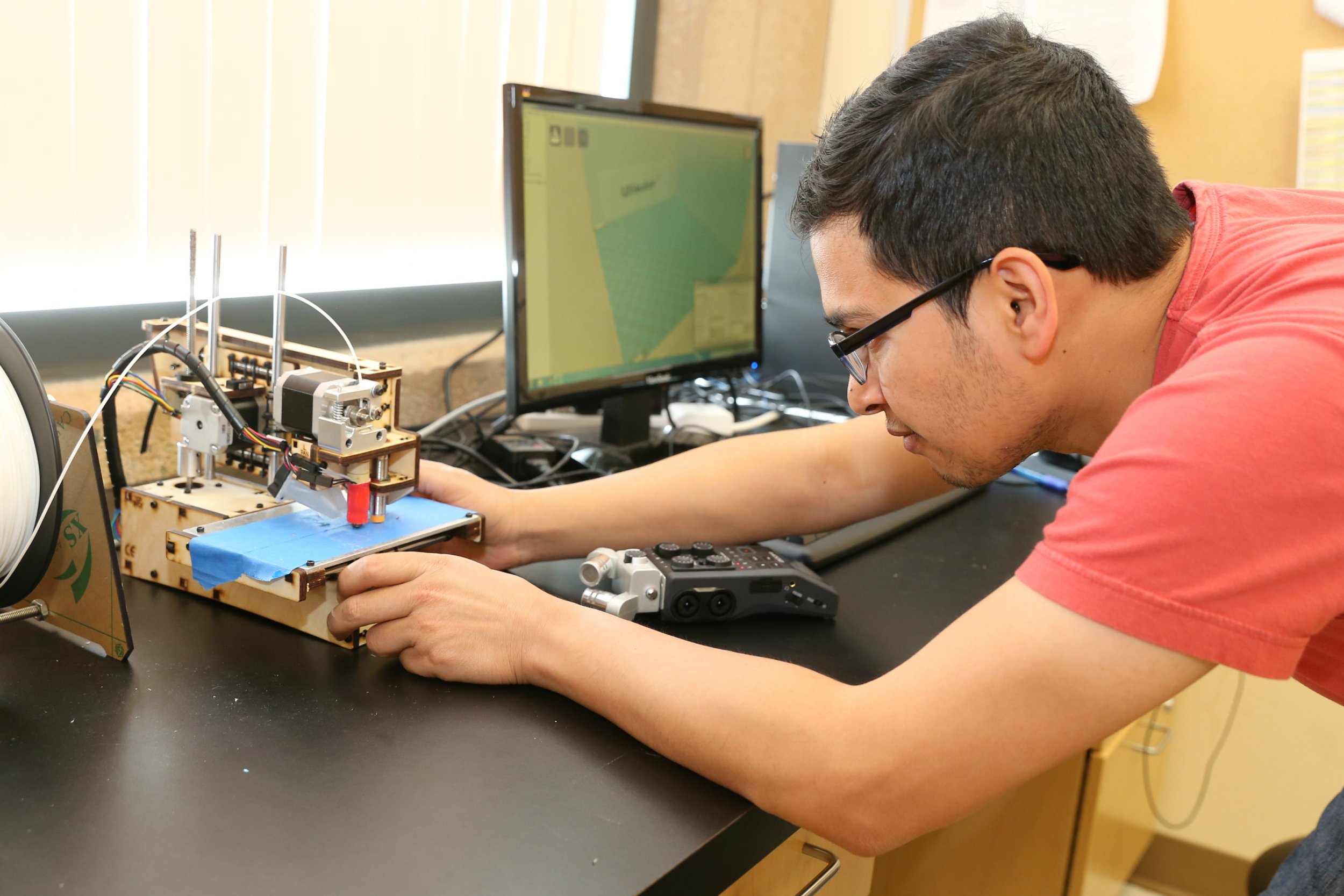
To the average visitor to the RapidTech prototyping center at University of California, Irvine, the methodical buzz of its 3-D printers would be nothing more than background noise. But to Mohammad Al Faruque, that hum is valuable information.
A professor of electrical engineering and computer science, Al Faruque directs the university's Advanced Integrated Cyber-Physical Systems lab and is a sometime collaborator with RapidTech, a nonprofit educational shop that builds specialty items such as airplane parts for businesses. He and his graduate students have taught a computer to copy a 3-D printed object's shape using only an audio recording of its creation. It's a feat of reverse engineering that he thinks industrial spies could use to steal otherwise encrypted design files.
"President Obama has said he wants to bring manufacturing back to the United States," says Al Faruque, and those companies will need to protect their intellectual property to stay competitive. "But there hasn't been much investigation of this field," he says, adding that "100 percent security is our goal."
Anyone who has heard the melodious tones of an Apple ImageWriter II in action knows that printers have distinct voices, and 3-D printers are no different. As they move on three axes, depositing small amounts of material to build an object, each makes unique sounds. The team taught a computer program to understand the noises of one particular model and translate them into manufacturing code. "The machine learns to tell the speed and x and y directions," says graduate student Sujit Rokka Chhetri, who worked on the project. "You have to analyze the printer and do training by printing known objects and learning from them."
"Basically it involves a lot of machine learning algorithms," says Al Faruque.
To test the program, the lab recorded the printing of a relatively uncomplicated key shape. When they fed the audio back into their computer, it re-created the design with 90 percent accuracy. "This was a proof of concept," says Al Faruque. "We used a simple, off the shelf 3-D printer."
The experiment has attracted manufacturing and security researchers from the university and at least one private company, and Al Faruque says the finding is only the tip of the iceberg.
"This is just the beginning, we are interested in the security of the whole manufacturing supply chain. We're looking at other analog emissions—power, vibrations, electromagnetics—to see if they pose a security risk," he says.
Uncommon Knowledge
Newsweek is committed to challenging conventional wisdom and finding connections in the search for common ground.
Newsweek is committed to challenging conventional wisdom and finding connections in the search for common ground.
About the writer
To read how Newsweek uses AI as a newsroom tool, Click here.








